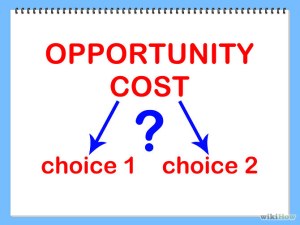Opportunity Cost – Student Loans
 What is opportunity cost and how does it relate to student loans? Let’s say you have $50,000 which is about the cost of the average student loan. You probably do not have $50,000 just sitting around to pay off your student loan. But many people will focus on paying off this loan as quickly as possible. It has always been considered a bad thing to carry debt. We have all been taught to pay off our debt as quickly as possible. However, there are times and circumstances that may cause investors and borrowers to reconsider this approach.
What is opportunity cost and how does it relate to student loans? Let’s say you have $50,000 which is about the cost of the average student loan. You probably do not have $50,000 just sitting around to pay off your student loan. But many people will focus on paying off this loan as quickly as possible. It has always been considered a bad thing to carry debt. We have all been taught to pay off our debt as quickly as possible. However, there are times and circumstances that may cause investors and borrowers to reconsider this approach.
Let’s assume you have a really competitive interest rate on your loan. Your monthly payment will be around $500 a month. The actual amount depends on the interest rate and the term of the loan. Let’s also assume you have another $500 a month that you could apply to your student loan each month or use as a start on investments.
What is the Opportunity Cost of this Extra $500
Applying the $500 to the student loan will reduce the total interest you pay by roughly the amount of interest you are being charged on your loan. Let’s say that it is 5% for this discussion. The opportunity cost in simple terms for this scenario is 5%
On the other hand, you could invest in equities in the stock market. The stock market has historically returned between 7% and 11% on average with some years much higher and of course some years much less. If we assume an average 9% return then the opportunity cost is 9% for this scenario. But wait you must also consider income tax, which may be somewhere in the range of 20% depending on your tax structure and deductions.
Nine percent of $500 is $45 income each year on average. If you pay 20% of this in tax or $9 then the net is $36 which is still above 7% net and 2% better than the opportunity cost of repaying the student loan quickly.
Use your own numbers to make your decision. The cost of the loan, the expected return you can get on the market and your own tax rate to help make a decision. Invest wisely and diversify, avoid speculative stocks and stick to the plan to improve the overall result.
You can follow any responses to this entry through the RSS 2.0 feed. You can leave a response, or trackback from your own site.
Leave a Reply